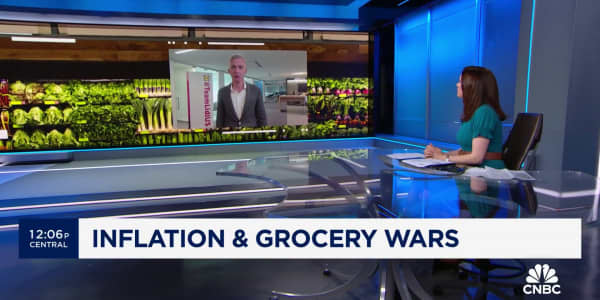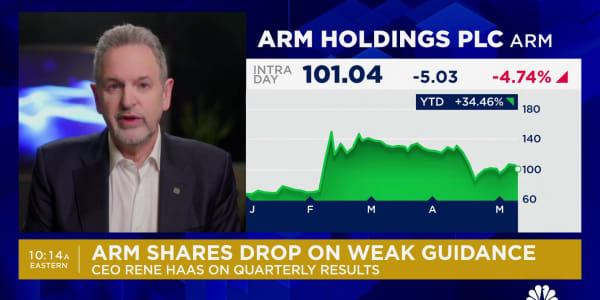
The first-quarter gross domestic product report put several dents in popular Wall Street economic narratives, none of which bode well for growth ahead.
Worst among current economic fallacies was the notion that consumers, buoyed by big savings at the gas pump, would propel U.S. GDP to higher levels. Rather than spend the savings at the pump, which saw the average price for a gallon of unleaded gas sink below $2 in several states as 2014 drew to a close, consumers saved that money and actually pulled back on their spending pace.
As a percentage of the economy, the consumer actually grew in 2015's first three months. Personal consumption expenditures now account for 72 percent of GDP, a mathematical phenomenon attributable at least in part to a retreat on business investment at the corporate level.
But actual spending increased just 1.9 percent in the quarter, a steep drop-off from the 4.4 percent gain in 2014's fourth quarter and the worst rate by a fairly wide margin since the same period a year ago. The end result was an anemic 0.2 percent gain overall for GDP. At one time, economists had been predicting 3 percent growth.
The spending slide was "particularly disappointing given that the decline in energy prices generated a massive 6.2 percent annualized jump in real disposable income," said Paul Ashworth, chief U.S. economist at Capital Economics, in a report for clients.
Personal savings jumped to 5.5 percent from 4.6 percent. If consumers didn't spend their savings while oil was falling, it's hard to imagine them parting with their cash now that gasoline prices are rising again. The price for a gallon of regular has jumped 15 cents just over the past two weeks, according to AAA. That has happened as benchmark West Texas crude prices have surged about 28 percent over the past three months. (Tweet This)
Read MoreWall Street's mystery: Where's the growth?
With the winter fading away, albeit slowly, "we would expect to see signs of a pickup in consumption growth emerging soon," Ashworth added, expressing widely held hopes among economists that nonetheless have not materialized.
In fact, economists whiffed significantly on their first-quarter growth expectations, even after weeks of lowering projections. The Wall Street consensus was a comparatively optimistic 1.0 percent heading into Wednesday morning's data release; only the GDPNow tracker, tabulated by the Federal Reserve's Atlanta branch, had a strong handle on the situation, predicting a 0.1 percent rise.
"The downward pressure on profits, the large drop in oil-related investment and the strong dollar are holding back the U.S. economy," Gad Levanon, managing director of macroeconomic and labor market research at The Conference Board, said in a statement. In the past 12 months, the dollar has risen 19.7 percent against a trade-weighted basket of global currencies.
"While the weak consumption of goods was partly a result of bad weather, it seems that most of the boost from oil prices already took place in the previous quarter," Levanon added.
Read MoreCheaper oil shouldhelp economy? Wrong
Don't expect help from corporate America, either.
The oil price decline boosted neither consumer nor company spending. Capital expenditures, or capex, actually dropped 3.4 percent in the quarter, even as companies have spent, according to market data firm TrimTabs, $237.1 billion buying back their own shares just since March.
The ball on growth is now in the Fed's court. The central bank, which meets this week and will release its post-meeting statement later Wednesday, has indicated a desire to normalize interest rates even amid the tepid economic growth.
Though most Wall Street economists likely will hold to the story line that elevated levels of consumer confidence will translate to stronger growth ahead, full-year GDP gains seem likely to fall short of 3 percent expectations, posting yet another challenge to Fed policy.
"We knew Q1 was going to be weak with only the degree in question and we expect to have a bounce back in Q2 with also the degree in question," Peter Boockvar, chief market analyst at The Lindsey Group, said in a note. "For the full year though, 2 percent-type growth is still with us and the hoped for 3 percent growth rate that too many still expect is highly unlikely to happen."






